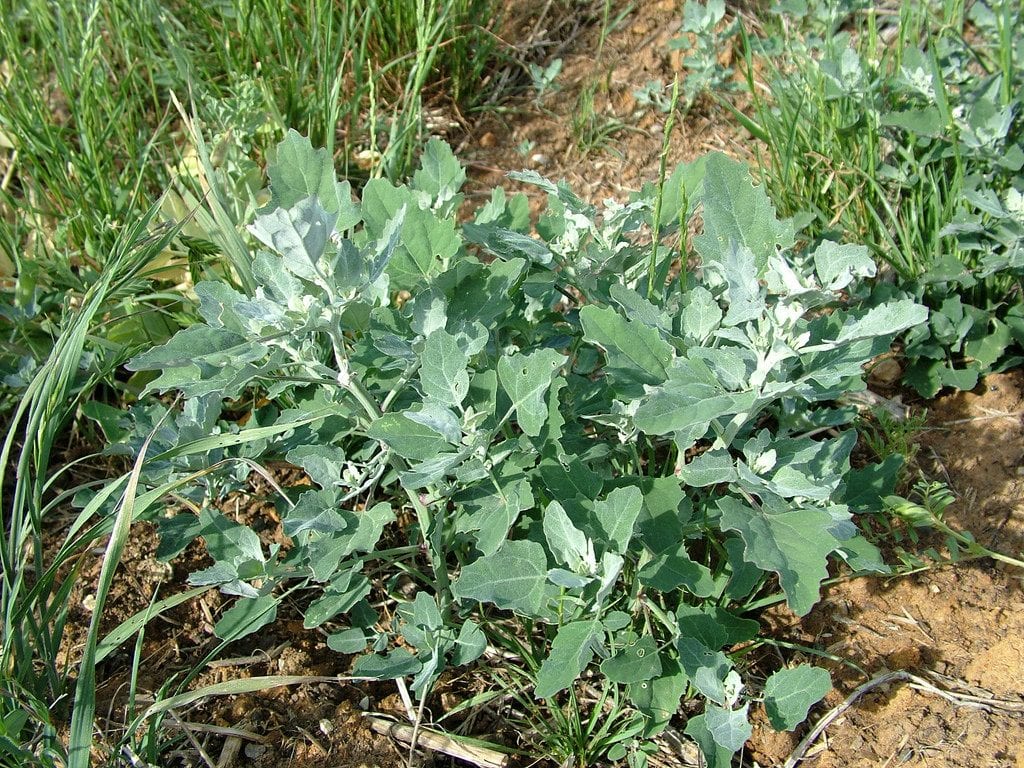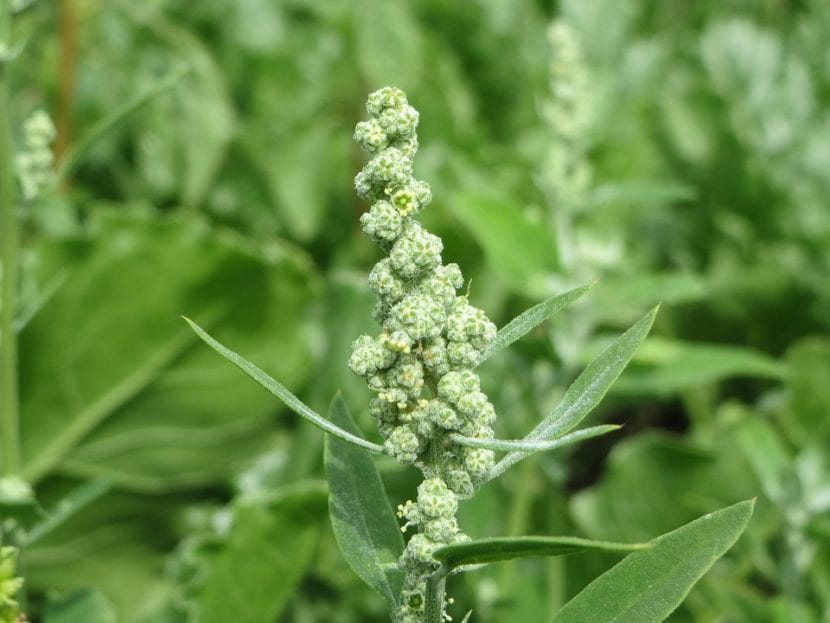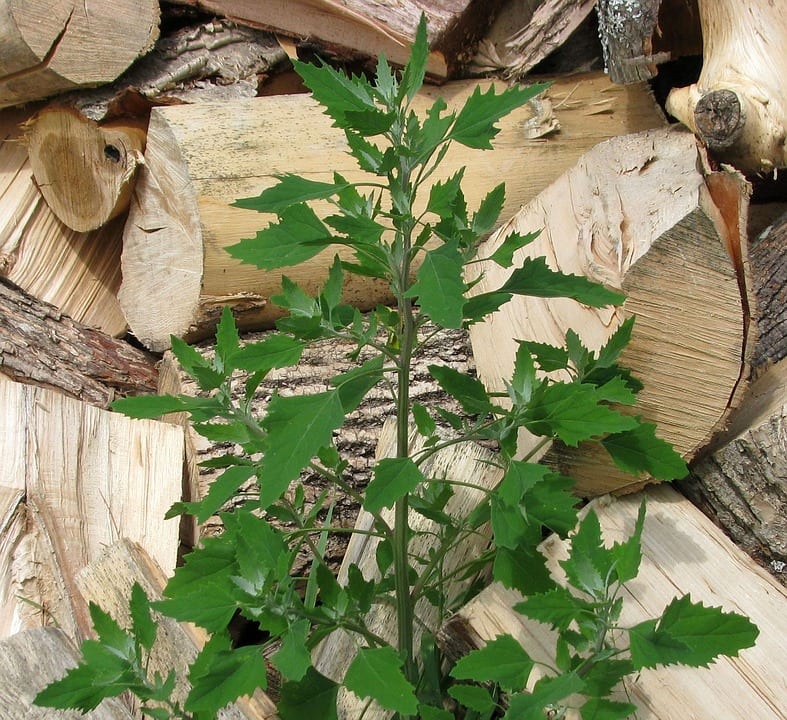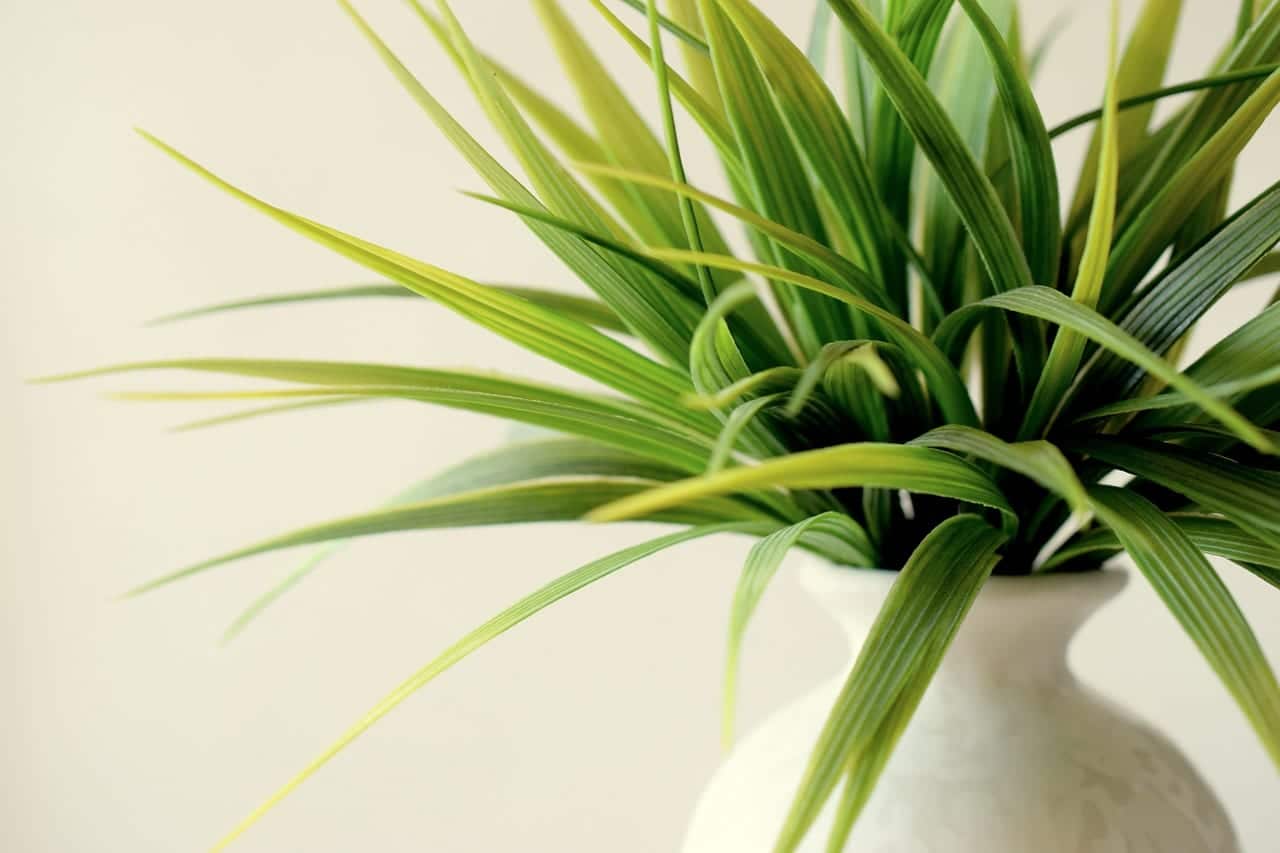
Image - Flickr / Harry Rose
Herbs can sometimes surprise us, as is the case with the ash plant. It may be that, as we are so used to seeing them, we do not stop to think about their possible uses, but it is advisable that we do so.
And it is possible that we have a drug in front of us and we do not even know it. 😉 Therefore, this time I'm going to tell you about the ash.
Origin and characteristics of the ash plant

The ash plant, also known as armuelle, cañizo, ceñidros, wild quinoa, zenizón, or quinhuilla, It is a grass that grows between 1 and 3 meters, although by its own weight it is normal for it to lean after flowering. Its scientific name is Chenopodium album, and it is characterized by having alternate leaves that vary in their appearance: the first ones that emerge from the base are serrated, have a diamond shape and measure 3-7cm in length by 3-6cm in width; On the other hand, those on the upper part of the stems are rhomboid-lanceolate, 1-5cm long by 0,4-2cm wide, waxy and with a mealy appearance. The flowers, which sprout in spring and summer, appear distributed in dense and branched cyymose inflorescences 10 to 40 cm long.
It is not well known where it originates, but it is believed that it comes from Europe. However, it has been cultivated so much for a long time that it could not be 100% guaranteed that its ancestors come from the Old Continent, since today it grows in practically all the temperate and warm regions of the world.
Can it be cultivated?
Actually, it is not a species that is kept as a crop plant, but rather as a weed 😉. Indeed, the normal thing is that as soon as it is seen it starts with the hoe. It is not very welcome in the gardens that we say, but that does not mean that it cannot be had as an ornamental. In fact, and as we will see below, It is very interesting to reserve a space, even if it is small, in the garden or even have it in a pot for its medicinal properties.
Based on this, if you dare, you should take into account the following:
Location
The ash plant is an herb that grows in full sun or in semi-shade. It is common for it to germinate in its natural habitat in the shadow of other plant beings and that, as it grows, it becomes more exposed to the light of the star king.
Earth
- Garden: not demanding. It grows in poor, limestone, compact soils ... It has no problem. Now, if the soil you have is capable of absorbing and filtering water quickly, it will have a better development since it will be able to root more easily.
- Flower pot: the substrate to choose is not something that you should worry about either. You can use the universal plant substrate sold in any nursery, garden store or here same.
Irrigation

You have to water from time to time, avoiding waterlogging. From my own experience I will tell you that it is not very resistant to drought; in fact, when it germinates in the garden it usually does so in areas where there are plants that are being watered on a regular basis (in my case, as I live in the Mediterranean region, in an area where it rains very little and the climate is mild-warm, I water every other day during the summer and once or twice a week the rest of the year).
Depending on the climate in your area, both temperatures and rainfall, you will have to water more or less. Of course, if it is very hot and dry, the frequency of watering should be higher than if it is, on the contrary, humid and cold.
Use rainwater whenever you can, or failing that without too much lime (for example, one that is NOT recommended to use is the tap water that we have in many parts of the Mediterranean region, since it is not suitable for human consumption due to which is very chalky).
Subscriber
It is not necessary to pay, but you can do it in spring and summer with organic fertilizers, such as guano or compost.
Multiplication
The ash plant multiplies by seeds in spring, following this step by step:
- First, fill a seedling tray (for sale here) with universal substrate.
- Then water conscientiously.
- Then place a maximum of two seeds in each socket.
- Then cover them with a layer of substrate, and water again.
- Finally, place the seedbed outside, in semi-shade.
Keep the substrate moist, and you will see that they germinate very soon: in about 10 days 🙂.
Planting or transplanting time
In spring.

Rusticity
Resists cold and frost up to -7ºC.
What uses does it have? Ash properties

Image - Wikimedia / Enrico Blasutto
The ash plant is used solely for medicinal purposes. Its seeds can be sown in spring in a pot in full sun, and water it every time the substrate dries up. Thus, in just a few days they will germinate; and after a few months you will be able to take advantage of its properties by making an infusion with its leaves. It is used as:
- Laxative
- Diuretic
- Anthelmintic
- Hepatic
- Slightly sedating
Ash plant allergy
During their pollination season (spring and summer) some sensitive people may have symptoms of a pollen allergy: sneezing, itchy eyes and nose, watery eyes, liquid and clear nasal discharge.
If that happens to you, do not hesitate to consult an allergist.
What did you think of the ash plant?
I would like to know how it is used for hemorrhoids
Hi John.
We recommend you contact a professional.
We only report plants.
Greetings.